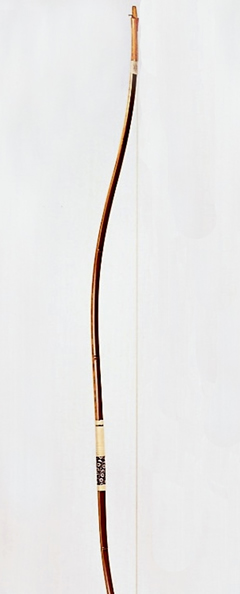MIYAKONOJO Daikyu (Bamboo Bows)

Mid-19th century documents indicate that the production of Miyakonojo bows was already a thriving local craft at the time. By the end of the century, a number of bowmakers had been instructed in the craft by two generations of the Kusumi family, who resided in the area. Blessed with an abundant local supply of raw materials, the craft continued to develop, and by the 1920s, bows were being sold across East Asia.
Although demand fell after World War II, at the height of production nearly three dozen bowmakers were active in the area. Miyakonojo is now the country's only production center for bows, accounting for 90% of all bamboo bows produced globally
All Miyakonojo bamboo bows have seven joints on the outward side and six on the inner side. Although the shape may differ according to the bowmaker, a good bow is one that has a perfect balance between its upper and lower portions, with due consideration given to the center of gravity and distribution of weight after the arrow has been shot.
Feature
The bow comprises seven outer joints and six inner joints. The shape differs according to the craftsman, but a good bow must have a proper balance between its upper and lower weight as well as a good weight distribution and center of gravity when drawing the bow.
How to make
The bow’s core is made of bamboo and wax tree wood and is placed between two sheets of bamboo. The core is tightened into a crescent shape using a wedge, after which the tips are attached and wrapped with a rope. Finally, the bowmaker puts the bow on a platform and adjusts it using his foot.

